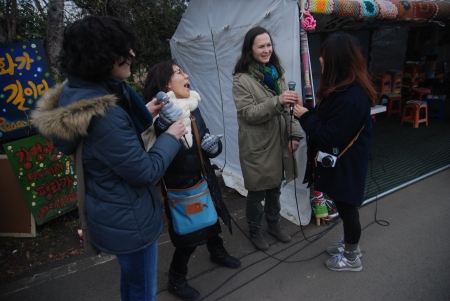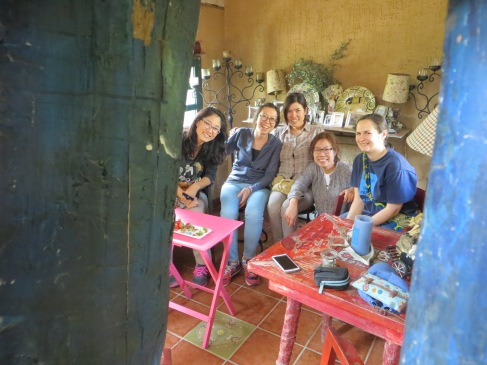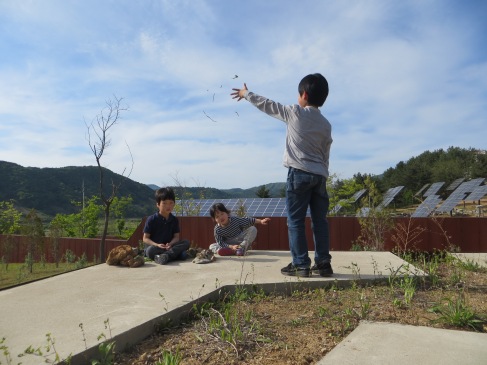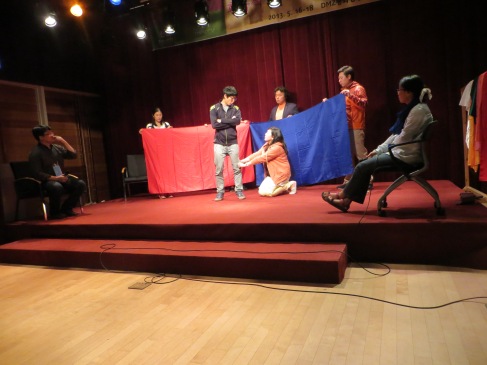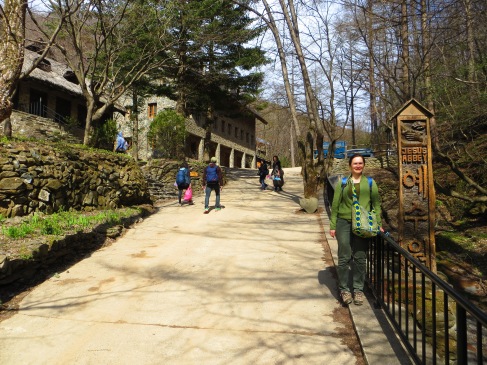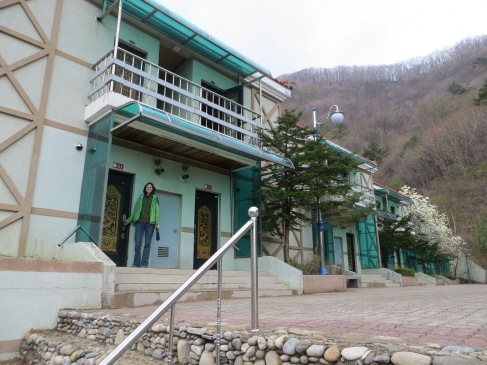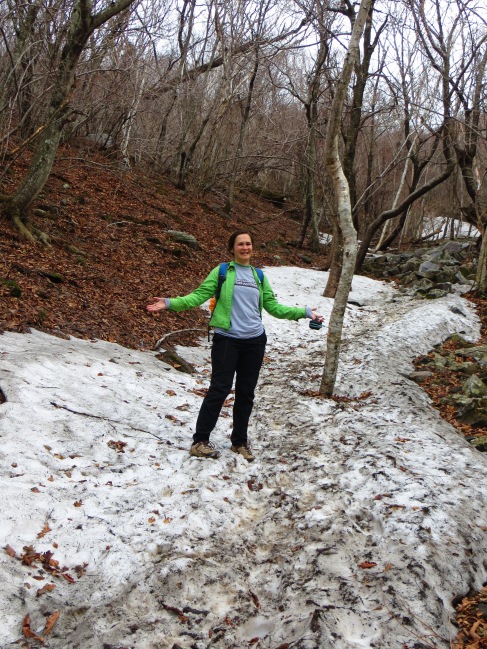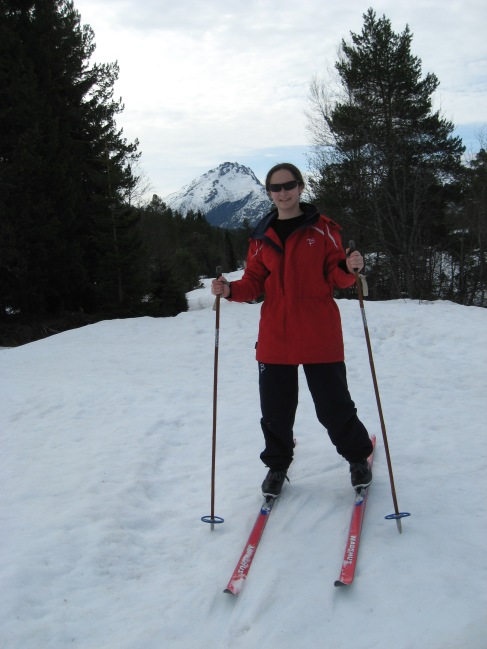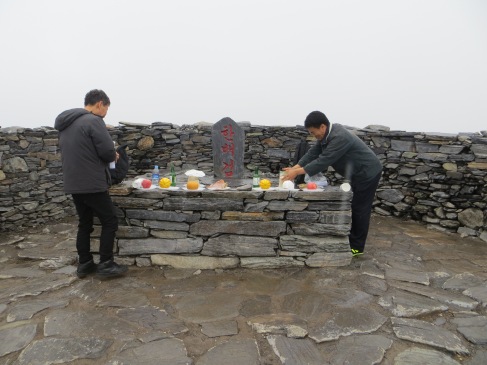Firsts
I had some firsts this year. First Christmas away from my family. First time to work on my birthday. First New Year’s church service.
I’ve been busy lately, not so much with NARPI, but with Connexus, the after school English program that NARPI shares an office with. I’ve been interviewing the Connexus students one by one and writing up recommendations for their teachers. For one week I was a substitute teacher for my friend Sarah while she visited her family in the United States.
Published
During our winter holiday, I had a chance to visit Jeju Island, and the village of Gangjeong, in particular. I wrote a reflection about my visit and it was published in the English language newsletter for people who support Gangjeong in their struggle against the construction of a naval base on the coastline of their village. I’ll copy my reflection below, but this is the link to the whole newsletter.
Solidarity Is Not a One-Way Gift
A meeting can “stir that which is deepest in us and bring it to consciousness.” This quote from Jean Vanier (p. 168 in Community and Growth) has been a theme for my recent visit to Gangjeong Village. Meeting the people of Gangjeong has stirred something deep inside of me. I’ve been so impressed by the strength and energy that sustains people’s hope and joy even though it is mixed with pain and anger.
During my first visit, I held Mama Song’s hand for the human chain and was impressed how she put away her cane and danced every dance, keeping strong while her husband was in prison. This time, as the line of construction trucks grew behind the dancing protesters, I laughed with joy to see Paco zigzagging back and forth across the street encouraging the dancers on both sides. The ability to sing and dance in Gangjeong could seem ironic to comfortable people, but it wasn’t the first time that I’ve witnessed how people who know well their own weaknesses and struggles have the freedom to fully celebrate, fully live, and fully love.
Solidarity is not a one-way gift that outsiders bring to a place like Gangjeong village. Visiting and being touched by the vibrant life is a gift. “All these can reawaken our deepest heart, recentre us, strengthen our faith, and renew our hope” (Vanier).
When I first visited in October, I appreciated the rituals of the daily mass and the 100 bows prayer. The priest was blocked from reaching the protesters at the main construction gate by a wall of riot police, but finally after persistent pacing and prayer, he was allowed to pass and serve the Eucharist on the other side. During my December visit, the police repeatedly carried away the priests, nuns, and other congregants from the construction entrance, but they returned again and again, as they do every day. I came with friends from Grace and Peace Mennonite Church and we sang Ubi Caritas together before the human chain, ‘where there is love and charity, God is there.’
This was my second visit, but it is, I hope, one of many. I feel connected to Gangjeong; I want to come back because I have many more people to meet, places to see, and lessons to learn. I hope that other Americans can also learn from the people of Gangjeong and learn, on solid rocks like Gureombi, to build hope from the strength of community, rather than trusting fickle, dangerous nuclear weapons, which can never be a foundation for deep and lasting peace.
____
“All this can give us a greater desire to live in poverty, in insecurity, putting our trust in God” (Vanier).
